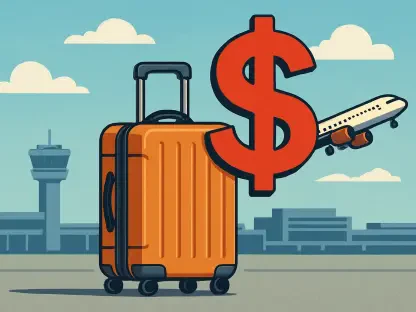In an increasingly interconnected world, navigating travel requirements is crucial for anyone planning a journey to Europe. Katarina Railko, a seasoned expert in hospitality and tourism, provides valuable insights into the European Travel Information and Authorization System (ETIAS), a new framework set to transform how we travel across the continent. In this conversation, Katarina unveils the complexities and implications of ETIAS for non-EU travelers, including its benefits, its role in strengthening border security, and its anticipated impact on streamlined travel.
What is the European Travel Information and Authorization System (ETIAS), and what is its main purpose?
ETIAS is a travel authorization system designed primarily for non-EU citizens who don’t require a visa for Europe. The main aim is to improve border security by screening travelers before they arrive, ensuring that Europe remains both a secure and accessible destination. It helps border authorities assess potential security risks, thereby facilitating a safer environment for both travelers and residents.
Can you elaborate on how ETIAS streamlines the travel entry process for non-EU citizens?
Certainly. ETIAS simplifies the entry process by providing a single authorization that allows travelers to visit multiple countries in the Schengen Area for short stays. This means that, once approved, travelers don’t need to acquire separate visas for each country they plan to visit, which significantly eases travel planning and enhances the overall efficiency of moving from one country to another within a short period.
How does ETIAS enhance border security?
By vetting travelers against security databases before they arrive, ETIAS acts as a pre-clearance system. It identifies individuals who may pose security threats, allowing authorities to prevent them from entering the Schengen Area. This proactive approach helps mitigate risks related to crime, terrorism, and illegal immigration, thus fortifying Europe’s external borders.
Which countries are included in the ETIAS program, and are there countries expected to join soon?
The program covers a wide range of countries, including popular destinations like France, Germany, and Italy, among others. In total, 30 European nations are part of this initiative. Cyprus is also set to join once it becomes part of the Schengen Area, expanding the system’s reach and influence.
When will Cyprus implement ETIAS, and what impact will that have?
Cyprus is expected to implement ETIAS upon its inclusion in the Schengen Area. This inclusion will make traveling to Cyprus as seamless as visiting any other Schengen country, offering travelers more options and ease in planning trips across the continent, which is beneficial for tourism and local economies.
How long can travelers stay in the Schengen Area with an approved ETIAS?
With ETIAS, travelers can stay for up to 90 days within a 180-day period. It’s important to note that ETIAS is specifically for short stays, aimed at tourists and business travelers. For those looking to stay longer, they will still need to apply for the appropriate visa.
Can you clarify if ETIAS replaces visas for longer durations?
ETIAS does not replace visas for longer stays. It is solely for tourists and short-term business travelers. Anyone intending to study, work, or live in Europe for an extended period will still need to apply for traditional visas and residence permits.
What is the fee structure for obtaining ETIAS, and are there any exemptions?
The fee for applying is 20 euros for individuals between the ages of 18 and 70. Those under 18 and over 70 are exempt from this fee. The pricing was revised to ensure adequate funding for maintaining the system’s operational and security measures.
Why was the fee revised from 7 euros to 20 euros?
The decision to increase the fee was made to sustain the long-term efficiency and security standards of the ETIAS system. With a higher fee, authorities can better cover the costs associated with technological updates and security enhancements, which are crucial for a robust screening process.
When is ETIAS expected to become mandatory, and what is the grace period for travelers?
ETIAS is projected to become mandatory by the end of 2026, with a brief grace period following into 2027. During this time, travelers will need to familiarize themselves with the requirements and complete their applications to ensure seamless travel experiences once it becomes fully enforced.
How should travelers prepare for this transition?
Travelers should stay informed about the latest updates on ETIAS and begin familiarizing themselves with the application process before they plan their trips. Ensuring valid passports and understanding the online application steps will be essential for a smooth transition.
Could you walk us through the ETIAS application process?
The application process is straightforward and digital. Travelers provide personal details and passport information online, and their data is cross-referenced with security databases. Most applications are processed quickly, but thoroughness in filling out forms is crucial to avoid delays.
Are there common reasons why an ETIAS application might be rejected?
Rejections can occur for several reasons, such as submitting incorrect information, being flagged in security systems, or failing to follow through with specific application requirements like mandatory interviews.
What steps can travelers take if their application for ETIAS is refused?
If denied, travelers have the right to appeal the decision. It’s advisable to carefully review the reasons for refusal, correct any errors, and resubmit the application. Ensuring all personal and travel data is accurate can significantly improve the chances of approval upon reapplication.
Why is ETIAS considered important for Europe?
ETIAS is pivotal for enhancing security and improving traveler experiences. It aids in gathering precise data on who is entering Europe, facilitating better monitoring and decision-making. With rising global travel, such systems are key to maintaining both safety and efficient border management.
How does ETIAS contribute to better data collection and security monitoring?
The system integrates with various databases, including those concerning security and immigration, allowing for comprehensive vetting of travelers. This integration means that authorities can flag potential threats earlier, providing a buffer for preventative action and enhancing overall safety.
In what ways does the system aim to support a balance between travel efficiency and security?
ETIAS strikes a balance by streamlining entry processes while maintaining rigorous security checks. It allows for quick travel between countries, which is a boon for tourism and business, all while ensuring that those entering do not compromise safety.
How will ETIAS affect travelers from the UK specifically?
UK travelers will need to secure an ETIAS authorization just like any non-EU tourists. This is a notable shift, as they will be required to plan and submit their authorization requests ahead of travel, which underscores the importance of staying informed and prepared.
What should UK travelers keep in mind when planning trips to Europe with ETIAS in place?
UK travelers should be mindful of application timelines, ensuring they have all necessary documentation ready well before their travel dates. Awareness of ETIAS requirements will be key to avoiding any disruptions, ensuring they can explore Europe seamlessly.
Do you have any advice for our readers?
As travel regulations evolve, keeping abreast of changes like those introduced by ETIAS is crucial. I advise travelers to regularly check updates from official sources, allowing them to adapt to new requirements smoothly, ensuring their journeys remain stress-free and well-organized.









